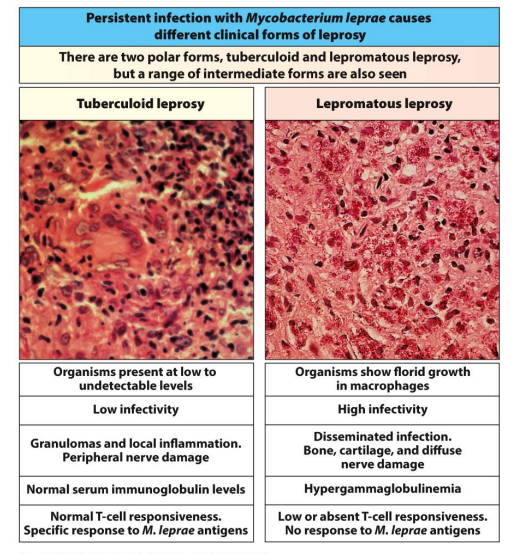What makes it difficult to study M. Leprae
M. leprae cannot be grown on artificial media in the laboratory so it is difficult to study; there is much about this mycobacterium that is not understood.
Mycolic acid is able to ○ Resist stresses such as heat and drying out. ○ Few antibiotics can enter the cell. ○ Survives phagocytosis, because of
The waxy, water-resistant coating on the outside
● A slow rate of growth: incubation in an infected person can be as long as 40 years.
Th WHO considered it unethical to treat leprosy with only one drug because it is:
Drug resistant
The slow growth of rate of Leprosy can occur by
incubation of infected person for as long as 40 years.
The characteristics of Corynebacterium are as follows:
• Pleomorphic, non-endospore-forming bacteria
• Ubiquitous on plants and in animals and humans
• Colonize the skin and respiratory, gastrointestinal, urinary, and genital tracts
• Divide via snapping division. Host tissue in the back of the throat has been killed.
Corynebacterium: Pathogenesis
Corynebacterium diphtheriae – Causes diphtheria
• Endemic in poor parts of the world that lack immunization
Corynebacterium Treatment
• It is gram-positive Administration of antitoxin neutralizes effects of the toxin
• Penicillin or erythromycin kills the bacterium • Surgery may be needed to open a blocked airway
Corynebacterium Prevention
Prevention • Immunization is the most effective way to prevent diphtheria
Pathogenesis of diphtheria in the body
(A) and (B) toxin secrets to proteins. (B) binds to the host cell. (B) is a carry of (A) proteins. Cells pull in clusters of receptors. endosome becomes acidified within the endosome. (A) and (B) cells need to be in a certain part of the cells enable to be effective. (A) impacts specific functions of proteins
differences between B. Anthrax and C. Diphtheria
B. Antharx : Lf, Pa, Ef bind to a receptor. The clusters of Lf and Ef. forms a landing pad. (B) will bind to the receptor. Within the endosome, ph decreases due to LF and EF. Burst out of endosome. The (B) (A) becomes acidic. The LF MAPPK and Ef increase cAMP by taking ATP within host cells, increasing CL and NA chemicals that cause Diphtheria.
C. diphtheria releases A and B; they attach to the cells' receptors. A burst out of the endosome. The (B) (A) become acidic Landing They enter the host cell and decrease pH. A is released from binding o B cells occurs Proteins synthesis. Inhinits protein synthesis.
Steps
